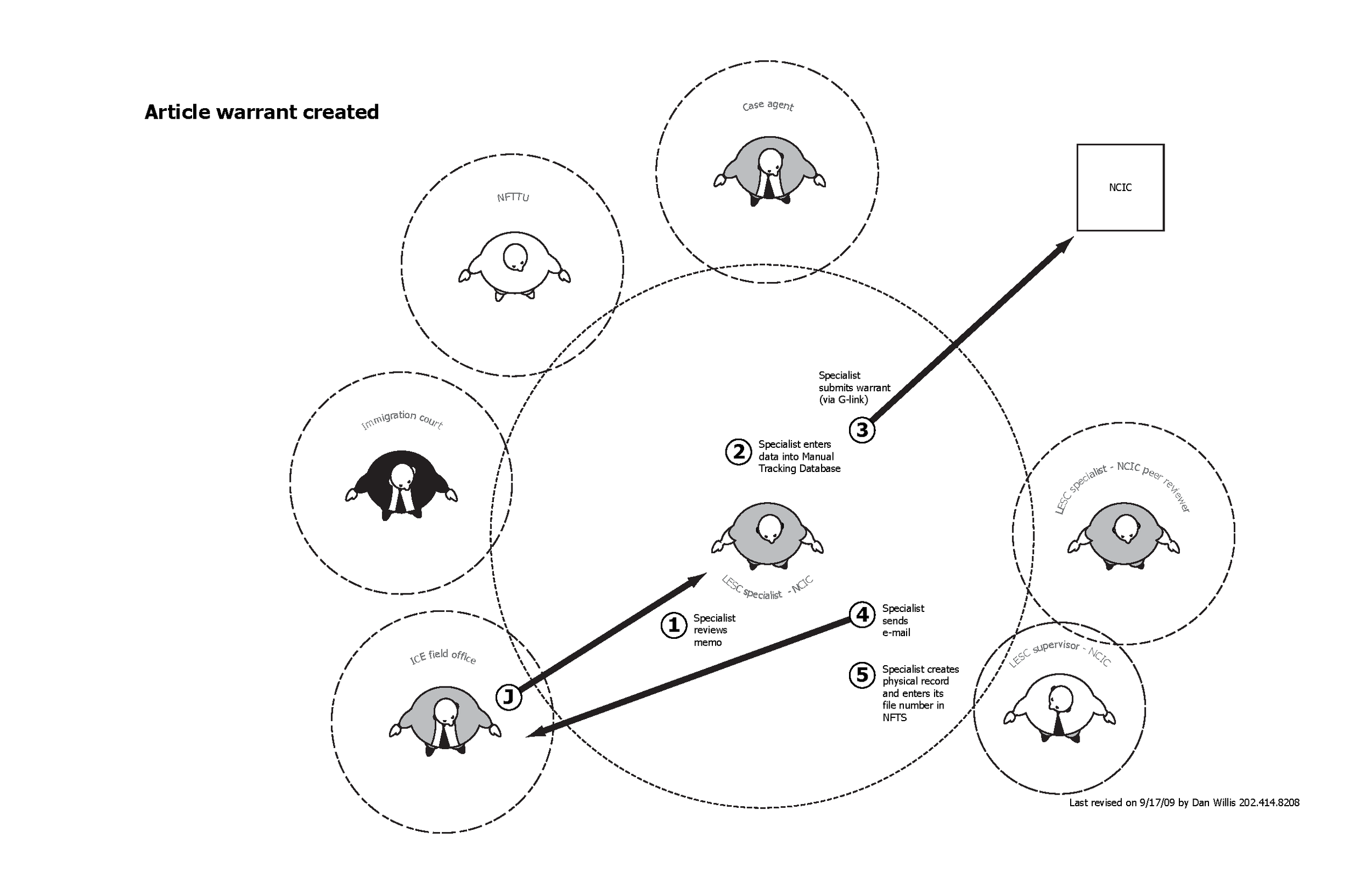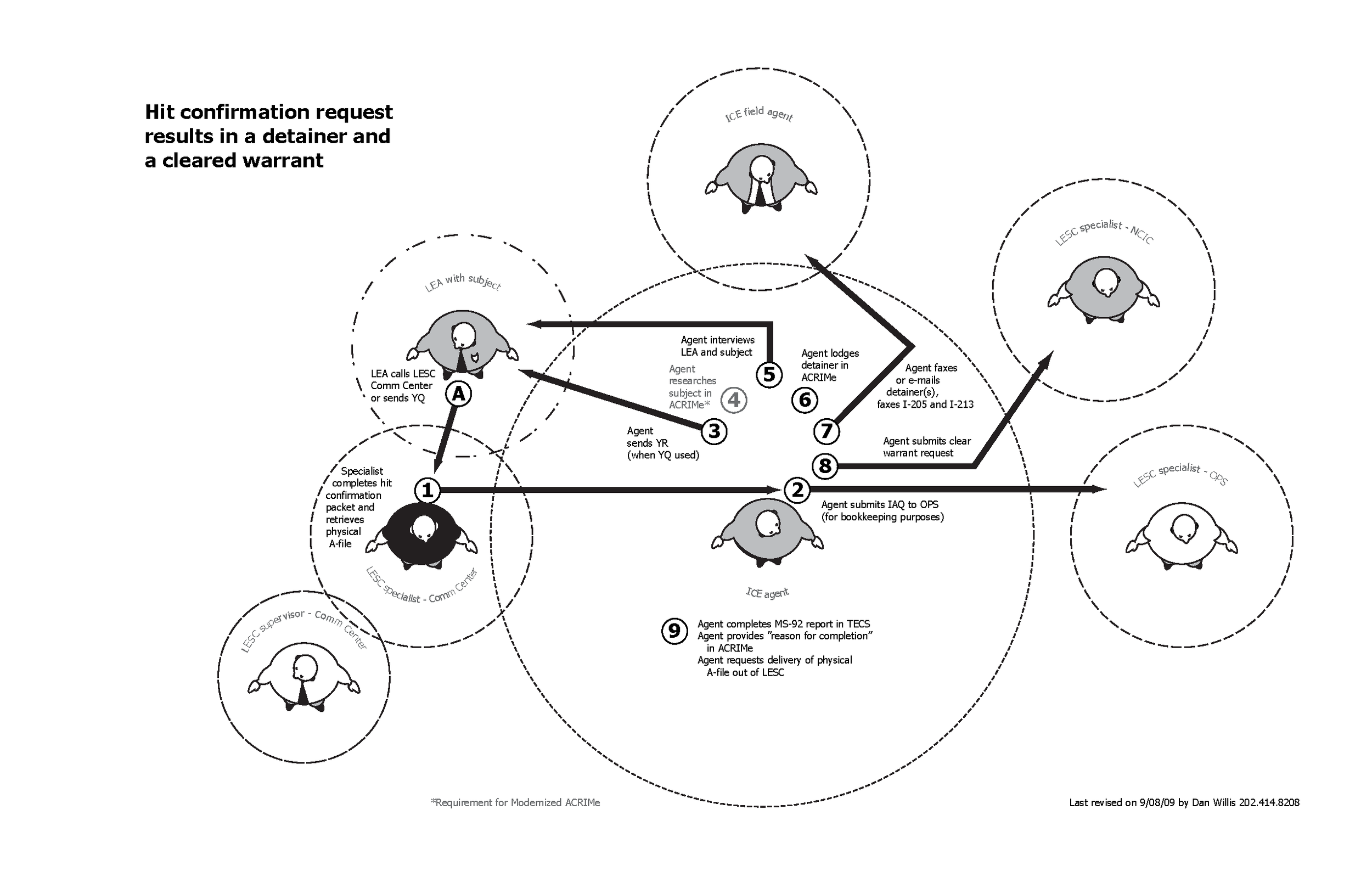Leveraging Idiosyncratic Expertise
/Simplistic descriptions of complex processes allowed a wide variety of experts to participate in the project.
Project
Redefining the Alien Criminal Response Information Management system (ACRIMe)
Client
Department of Homeland Security (DHS)
Roles
Functional lead, user experience designer
Problem
A small DHS agency nestled in rural Vermont depended an outdated, overworked, non-enterprise application to determine immigration status for national and local law enforcement agencies. The agency’s success relied entirely on their specialists’ expertise in navigating the existing system, a quirky kludge of the application with a dozen other poorly integrated national and international data systems (many of which were also in great need of an overhaul.)
Solution
Designing an application to replicate the idiosyncratic expertise of the agency’s specialists would have meant extending the corrupt legacy system’s inefficiencies into the new solution. Instead, we focused on automating all tasks best performed with code and reframed the specialists’ processes to leverage immigration status expertise and judgment best supplied by human beings.
- As the lead for the requirements team, I conducted specialist interviews, user testing, and other research methods to develop a holistic set of high-level requirements.
- Based on those requirements, I introduced a series of conceptual documents to align the efforts of requirements, development, and QA teams. These documents included diagrams describing the jump from a non-automated to a semi-automated system, user flows tracking tasks both within and outside of the application, and a highly visual handbook that explained the basics of the agency and of immigration status determination.
- I designed and coded a task-based prototype.
- After handing off the prototype, wireframes, and UI specifications, I consulted on usability and tactical issues.
Select an image to view it larger










